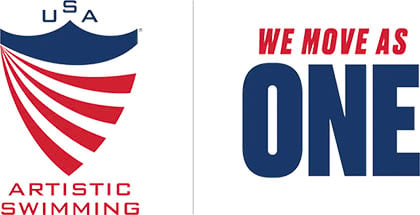It’s time to rethink what a workout can be! Sure, there’s definitely still a time and place for a dedicated run, yoga class, or lifting session. But the movement in your life doesn’t have to (and shouldn’t) end there.
Fill your life with purposeful, stimulating physicality, and it will pay off in ways you expect, and ways you can’t predict. You’ll perform better, think better, and simply feel better all day!
The perfect place to start is with “movement snacks” (and Xero Shoes, of course.)
What are movement snacks?
“Movement snacks” are a groundbreaking training concept from Born to Run 2: The Ultimate Training Guide by Chris McDougall and Eric Orton, the follow-up to McDougall’s iconic best-seller Born to Run.
These easy-to-learn exercises help engrain crucial human movement patterns on both physiological and neurological levels. Borrowing a page from McDougall’s limitless exercise manifesto Natural Born Heroes: Mastering the Lost Secrets of Strength and Endurance, they also require no equipment and can be done anytime, anywhere.
Another great thing about snacks? You can do them on your own, but they’re even better with a partner!
Here’s why. For one, adding someone else to your movement practice has been shown in research (and by countless real-life examples) to help all types of workouts be more effective. It helps people stay more motivated to keep coming back. It even enhances exercise’s stress-reducing benefits.
Basically, adding another person (or two, or a few) instantly makes everything that makes movement great even better!
Here are three movement snacks that are group-friendly, fun, and suitable for all fitness levels!
These exercises are excerpts with permission from Born to Run 2: The Ultimate Training Guide. Get your own copy of the Born to Run 2 book here.
Xero Shoes For You and Your Partner
1. Braced Deep Squat: Solo or With Partner
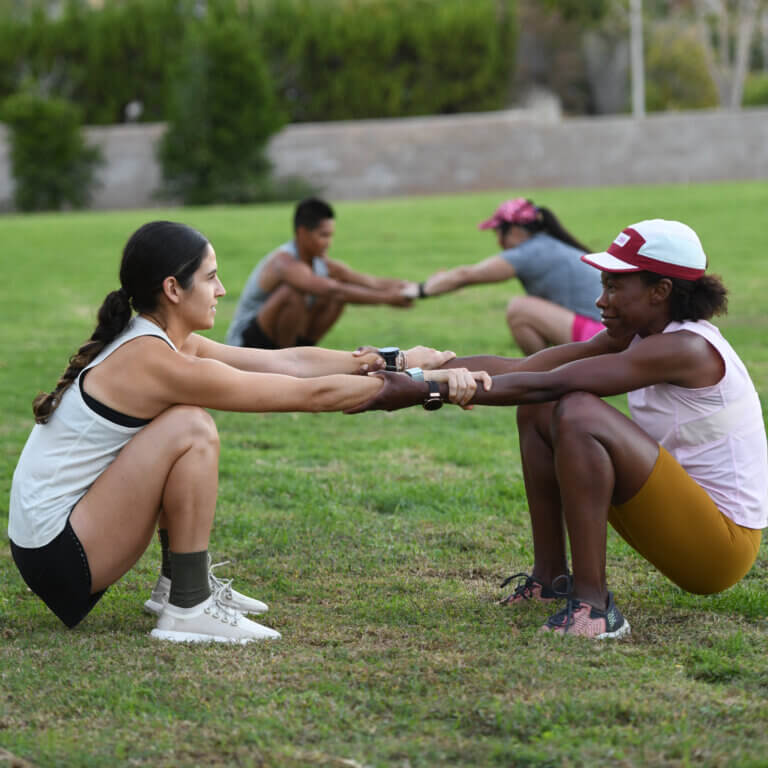
“How to:
- Face your partner and grab each other’s wrists.
- Support each other by pulling backward, easing down into a squat at the same time.
- Pause a few beats, then pull each other back up.
How many: 10-12, with a focus on range of motion and controlled technique, rather than speed.
Pay special attention to: Focus on getting as deep as you can, with good form, keeping feet facing straight forward. Improve through time.
Purpose: Deep Squats can unlock your entire range of motion, everything from your neck to the soles of your feet, while loosening tight hips and Achilles and easing lower back tension”
2. Bear Crawls: Solo or With Partner
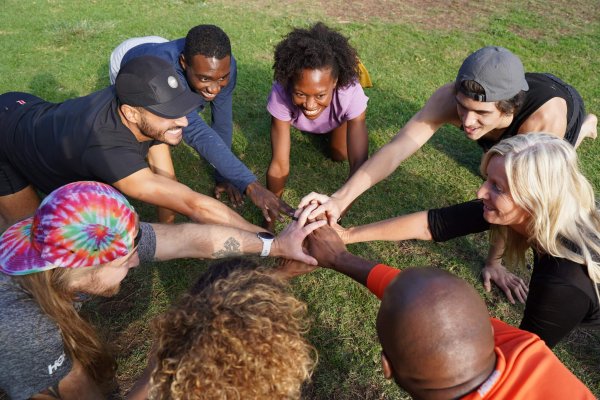
How to:
- Start on all fours with your hands under your shoulders, knees under hips, and head in a comfortable position, eyes looking at least 1-2 feet ahead of you, ideally straight ahead.
- Press evenly onto your palms, tuck your toes under and lift your knees to hover just off the floor.
- Push onto your left toes and right hand, stepping forward with the left hand and right foot.
- Continue forward in a nice fluid motion. Keep the hips stable and avoid overly swaying form side to side. Repeat the same opposite arm-opposite leg pattern to move forward. Throughout your movement, keep your focus on easy breathing through the nose.
How many: 20 steps (each time the right hand makes contact with the ground) to start, and build from there.
Pay special attention to: Keeping the knees 2-3 inches off the floor. Work on keeping the hips stable and avoid shifting from side to side. Rest as needed.
Purpose: Crawling builds full body strength and connects upper and lower body, as well as developing coordination. It’s also a sneaky quad burn!”
A movement snack from “Born To Run 2: The Ultimate Training Guide”
Make it a fun partner workout by bear crawling towards each other and then shaking your partner’s hand. Then proceed to bear crawl backward and repeat.
3. Side Lift: With Partner
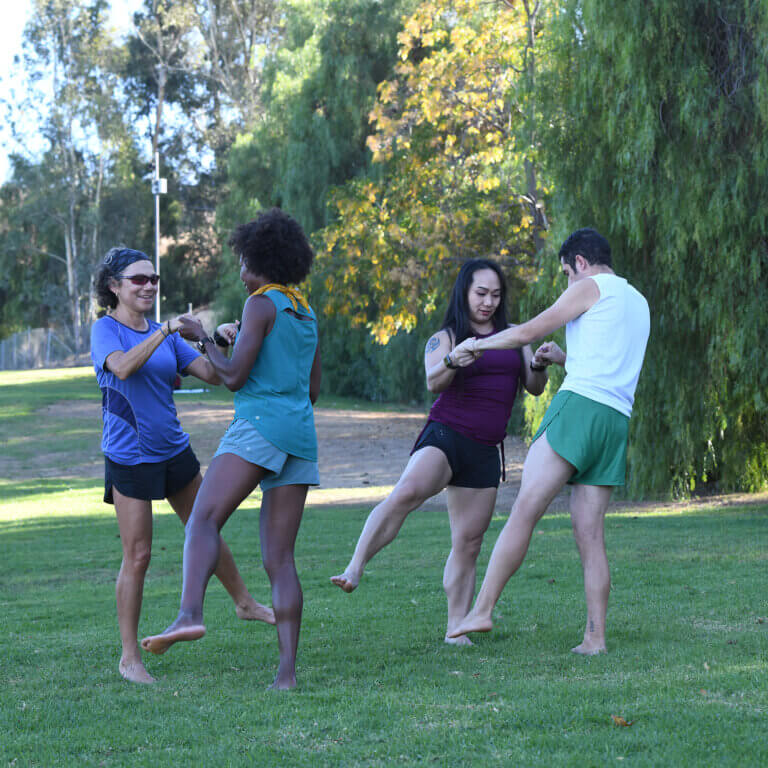
“How to:
- Balance barefoot on your right forefoot using a wall or chair or partner to help you stabilize.
- Keeping your right leg straight, raise your left leg sideways (think of half a pair of scissors opening).
- Raise your left leg only as high as you can while maintaining level hips, and then go back to the start position.
Note: This is a stabilizing exercise for the stance leg, not a range-of-motion exercise for the moving leg.
How many: 15-25 reps, then repeat with the opposite leg.
4. Knee Lift: With Partner
How to:
- Balance barefoot on your right forefoot using a wall or chair or partner to help you stabilize.
- Keeping your right leg straight, raise your right heel slightly.
- Now, lift your knee in front of you as high as you can, and then go back to the start position. Keep your movements slow and controlled.
- The focus is on the stance leg, not the moving leg.
Note: This is a stabilizing exercise for the stance leg, not a range-of-motion exercise for the moving leg.
How many: 15-25 reps, then repeat with the opposite leg.
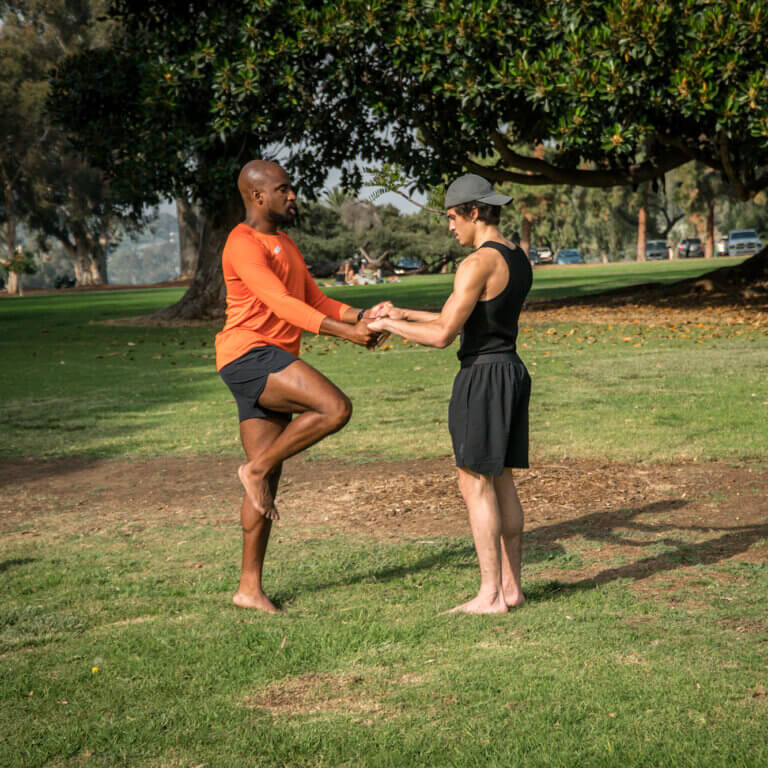
5. Quick Feet: With Partner
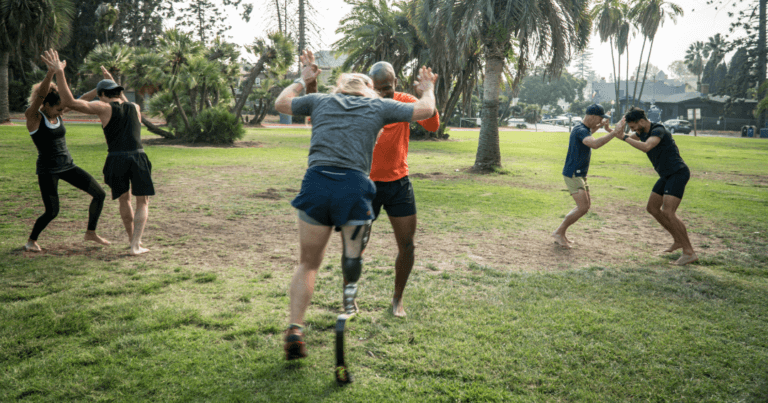
How to:
- Facing a partner, raise your hands and place your palms against theirs.
- While maintaining palm-to-palm contact, the “lead” partner then tries to quickly step on the other person’s toes.
- The following partner should dance away, doing everything possible to avoid foot contact while keeping palms connected.
- Switch
How many: Just have fun with it and switch back and forth several times between leaders.
Pay special attention to: Never breaking hand contact.
Purpose: This is a fun group warm-up to get the heart rate up and simulate the central nervous system with some multidirectional, quick movement with the feet.







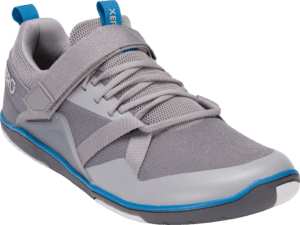






 Fostering honest and responsive relationships between businesses and consumers.
Fostering honest and responsive relationships between businesses and consumers.